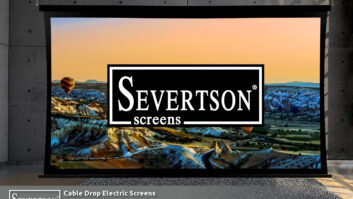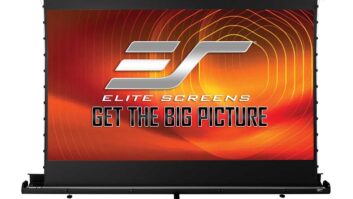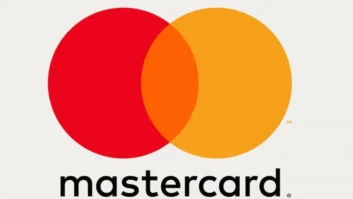BARCELONA – Tablets with 7- and 8-inch screens dominated the handful of tablet introductions here at the Mobile World Congress, and they’ll likely be followed by many more as sales of small-screen tablets accelerate, analysts said.
At the show, Hewlett Packard used a 7-inch display to launch its first Android tablet; Asus showed a new 7-inch tablet; and Samsung unveiled the first 8-inch model in its Galaxy Note line.
For its part, Sony stayed with the 10.1-inch display size in launching what it called the industry’s slimmest, lightest 10.1-inch tablet, the water-resistant Xperia Tablet Z.
Retailers will likely see a greater selection of 7- and 8-inch tablets coming to market following the launch of the 7.9-inch iPad Mini in late 2012 to compete with a trio of 7-inch tablets from other key vendors: Amazon’s Kindle Fire HD, Google’s own Nexus 7 and the B&N Nook HD.
“The launch of the iPad Mini in late 2012 has been seen as an acknowledgement by Apple that smaller size (7- to 9-inch) tablet PCs would become a larger part of the market than larger sizes (9.7- to 10.1-inch),” said DisplaySearch analyst David Hsieh.
Smaller tablets are appealing because of “more attractive prices and the ability to hold the device in one hand rather than two,” he said.
Seven-inch tablets, however, could be cannibalized by the growing number of smartphones offering screen sizes of 5- to 6-inches, making them converged tablet/phone devices known as phablets.
In fact, new big-screen smartphones were shown at MWC by Asus, ZTE and LG. (See story, right.)
In tablets, here are some of the new products that showgoers found:
Asus: The company launched a 7-inch tablet that also makes circuit- switched cellular voice calls. Such products have not traditionally made it to the U.S. market, however. The Fonepad, due in Europe and Asia in the second quarter, features Android 4.1.2, 3G HSPA cellular data, single-core 1.2GHz processor, 1GB RAM, main camera and MicroSD card slot.
In a related introduction, Asus unveiled the Padfone Infinity, an Android 4.1.2 smartphone that slips into an optional 10.1-inch tablet-like display.
Hewlett-Packard: The company introduced its first Android-based tablet, the 7-inch Slate 7, positioned as an affordable tablet at a starting price of $169. It becomes available in the U.S. in April.
The 13-ounce, 10.7mm-thick (0.42-inch) Slate 7 features stainless-steel frame and embedded Beats Audio technology, making it the industry’s first tablet to offer Beats, HP said.
Slate 7 features include Android 4.1, ARM A9 dual- core 1.6GHz CPU, 1GB RAM, Wi-Fi 802.11b/g/n, 8GB storage, MicroSD slot, 3-megapixel main camera, VGA front webcam, Bluetooth 2.1 EDR, and a High-aperture-ratio Field Fringe Switching (HFFS) 1,024 by 600 LCD panel, said to provide a wide viewing angle even outdoors.
Samsung: The company expanded its Galaxy Note line with the 8-inch Galaxy Note 8.0, which complements the Galaxy Note 10.1 tablet and the 5.5-inch Galaxy Note II phablet.
The Note series features an S Pen, or stylus, that lets users annotate pictures and files with handwritten messages, draw pictures on screen, and preview a file or email message without opening it when the S Pen hovers over the file or message. Apps optimized for the S Pen are available.
The Android 4.1.2 model will be available worldwide beginning in Q2, including North America.
Key features include quad-core 1.6GHz processor, 2GB of RAM, and WXGA 1,280 by 800 IPS touchscreen with189 ppi. The company will offer a Wi-Fi version and a Wi-Fi plus cellular version.
Other features include 5-megapixel rear camera, 1.3-megapixel front camera, 1080p video playback at 30 fps, stereo speakers, GPS, Wi-Fi 802.11a/b/g/n with dual-band N, Wi-Fi Direct, AllShare Cast to mirror the tablet’s display on a TV via Wi-Fi, Bluetooth 4.0, choice of 16GB or 32GB embedded memory, 64GB MicroSD card slot, USB 2.0 and 4,600 mAh lithium-ion battery.
The Note 8 will also have a video-discovery service unveiled here by Samsung to let users search for specific TV shows and movies across multiple Internetvideo sources and a home’s TV-service provider.
The Note 8 offers the Premium Suite of software upgrades made available recently on the 1.4GHz quad-core Note 10.1. The features include upgrading the 10.1’s industry-first dual-screen capability to multiscreen capability, enabling users to open and view multiple apps at a time instead of just two apps at a time. So far, 20 apps have been designed to take advantage of the capability. The apps are viewable through windows whose sizes can be changed by the user.
Sony Mobile Communications: The company plans a second-quarter global launch of what it called the industry’s slimmest, lightest 10.1-inch tablet.
Although Wi-Fi and 4G LTE versions of the Xperia Tablet Z are planned, the U.S. market will get the Wi-Fi version, which will be available in black and priced at $499 for the 16GB version and $599 for the 32GB version. It will be available in the U.S. in the spring in Sony Stores, including online, and other authorized dealers. A 32GB white version will be available exclusively at Sony Stores. Both versions feature a 32GB MicroSD slot.
The Android 4.1-based tablet has a quad-core 1.5GHz processor with 2GB RAM. The tablet is 6.9mm thick (0.27 inches) and weighs 17.5 ounces. It will be upgraded to Android 4.2 after launch.
The XperiaZ is promoted as offering the highest level of water resistance (IP55 and IP57) ever delivered in a tablet. It can be kept beneath 3 feet of fresh water for up to 30 minutes when all ports are closed.
The HD display features WUXGA 1,920 by 1,200 resolution, 1080p front and rear cameras, nearfield communication (NFC) technology, universal IR remote and a new downloadable TV app that lets users discover local TV programming via an interactive TV guide and cross-search other streaming services for additional content.













